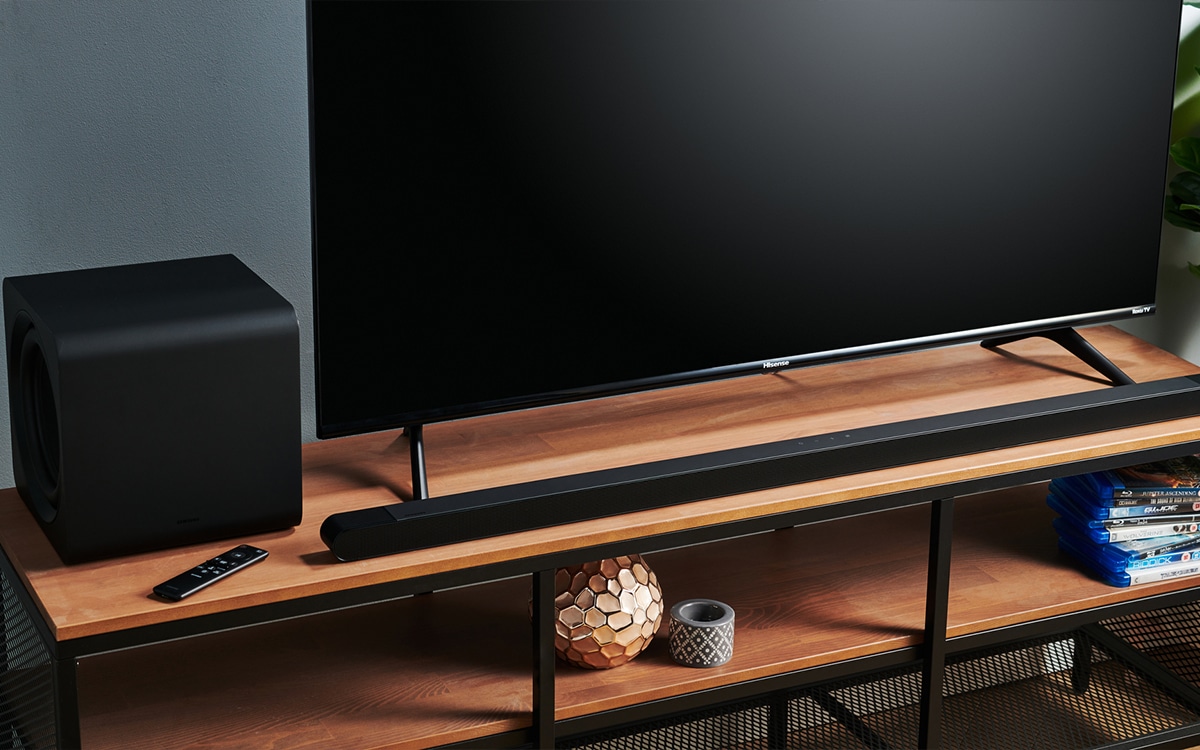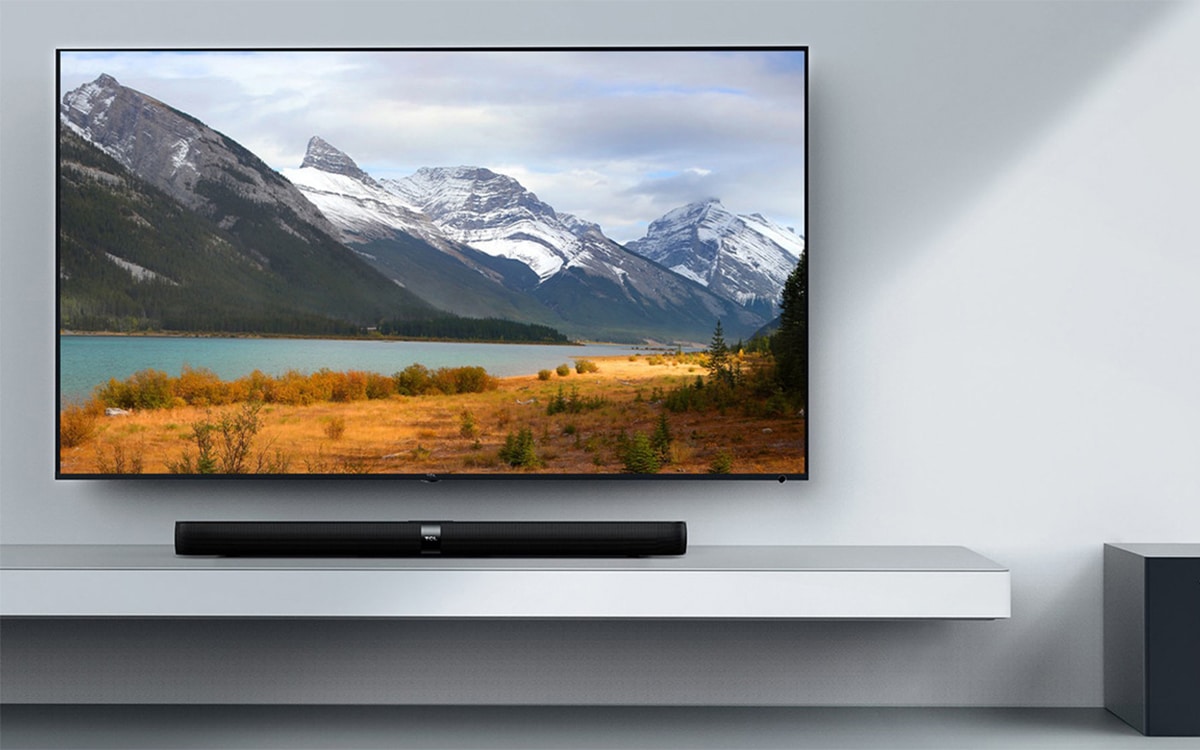Soundbars have so totally changed the way in which we interact with our home entertainment. No longer do we have to rely on subpar built-in speakers just to hear our favourite content. With a soundbar, you can totally level up the quality of your TV’s sound. Improving its fidelity with just a single device.
Soundbars are compact and make for a great alternative to costly surround sound systems. They can help you cut down on the number of wires cluttering the space, and even bring a sense of classiness to your living room. But is it possible to cut down on the number of wires even further and power a soundbar entirely through its paired TV?
Our Reliant tech experts have helped to match soundbars to their perfect TVs for years, and using their experience, we’re going to find out whether you can power a soundbar entirely through a TV!
Can You Use A TV To Power A Soundbar?
It’s not possible to power a soundbar completely through just a simple connection to the TV. A TV consumes a lot less electricity than a soundbar. As such, a TV can never hope to provide enough power to a soundbar.
Most modern TVs use up to around 60 to 70 watts when powered on. When compared to the power usage of a soundbar, it becomes clear just how mismatched the two devices are. The Average soundbar tends to use much more electricity when powered up when compared to a TV.
You can’t use a TV to power a soundbar. Instead, you’ll need to plug the soundbar into the nearest power outlet. The average TV uses less electricity than a soundbar, thus, it cannot provide nearly enough power for one!
Instead of using the TV to power your soundbar, you’ll need to plug it in separately. In most cases, you’ll need to plug the soundbar in directly to the nearest power outlet. As such, you should make sure there are enough power outlets available near your home entertainment set-up. So that not only does your TV and soundbar have sufficient energy, but also so any plugged-in devices like consoles have enough!
How Do You Connect A Soundbar To A TV?
Once your soundbar is plugged into a plug socket, there are a number of ways to then hook it up to its paired TV.
One of the best ways is to use an HDMI cable. HDMI cables aren’t just used to ensure your TV can display 4K images. They’re specifically designed to transmit premium video and audio signals. This means that HDMI is a great format for connecting a soundbar fully to the TV.
Another popular connection method is Bluetooth. Bluetooth allows for a wireless connection that is seamless and incredibly modern-looking. It’s a very popular option for those hoping to cut down on the number of wires bundled up behind their TV. However, it should be established that only some soundbars and some TVs are capable of connecting via Bluetooth. Be sure to check that each device is Bluetooth compatible before buying the two together.
If an HDMI connection is not viable, or you can’t connect wirelessly, then another option is to use an optical cable. Optical cables come with either square or circle-shaped connectors, so you’ll want to make sure that you choose a cable that’s suitable for hooking up directly to both devices. These cables are powerful and sturdy, which makes them great for taking full advantage of a soundbar’s sound quality.
Though it’s the least-optimal solution, you can also connect a soundbar through the TV’s headphone jack. This is a simple solution, but may not offer the best sound experience. The audio may lack in quality. You might also need to play around in the sound settings of the TV to get the right sound. You’ll need to toggle the bass, treble, and other settings, to ensure that the soundbar sounds just right.

Should A Soundbar Be Placed Below The TV?
Your soundbar can be placed under or above your TV. However, in most cases, it’s best to place it below the screen. This is because, in this position, the soundbar will be closest to the nearby plug socket.
When the soundbar is below the TV, it’s also much closer to ear level. This allows for an optimal listening experience, as the sound will be able to travel directly towards you!
You don’t need to place a soundbar directly below the TV. If necessary, it could even go suitably above the TV! However, you should make sure it’s aligned with the centre of the screen no matter what.
Either way, just make sure to align the centre of the soundbar with the centre of the screen. Don’t skew too far to the left or right of the screen. This will create a disconnect between the on-screen image and the sound coming from the soundbar. It won’t sound as though the audio is coming naturally from anything happening on screen. This destroys your sense of immersion.
Frequently Asked Questions
Can Your TV Be Used To Power Your Soundbar?
Unfortunately, a TV can’t be used to power a nearby soundbar. This is because in most cases, a TV will actually use more power than a soundbar. As such, a TV would be unable to provide enough power to any soundbar. You would instead need to plug your soundbar into a nearby power supply.
Can You Power A Soundbar With HDMI?
No. In order to power a soundbar, you must plug it into a wall socket. A TV cannot be used to route power to a soundbar. However, an HDMI cable can be used to transmit audio signals back and forth between a soundbar and a TV. Thus, it’s generally the preferred connection method in most cases.





